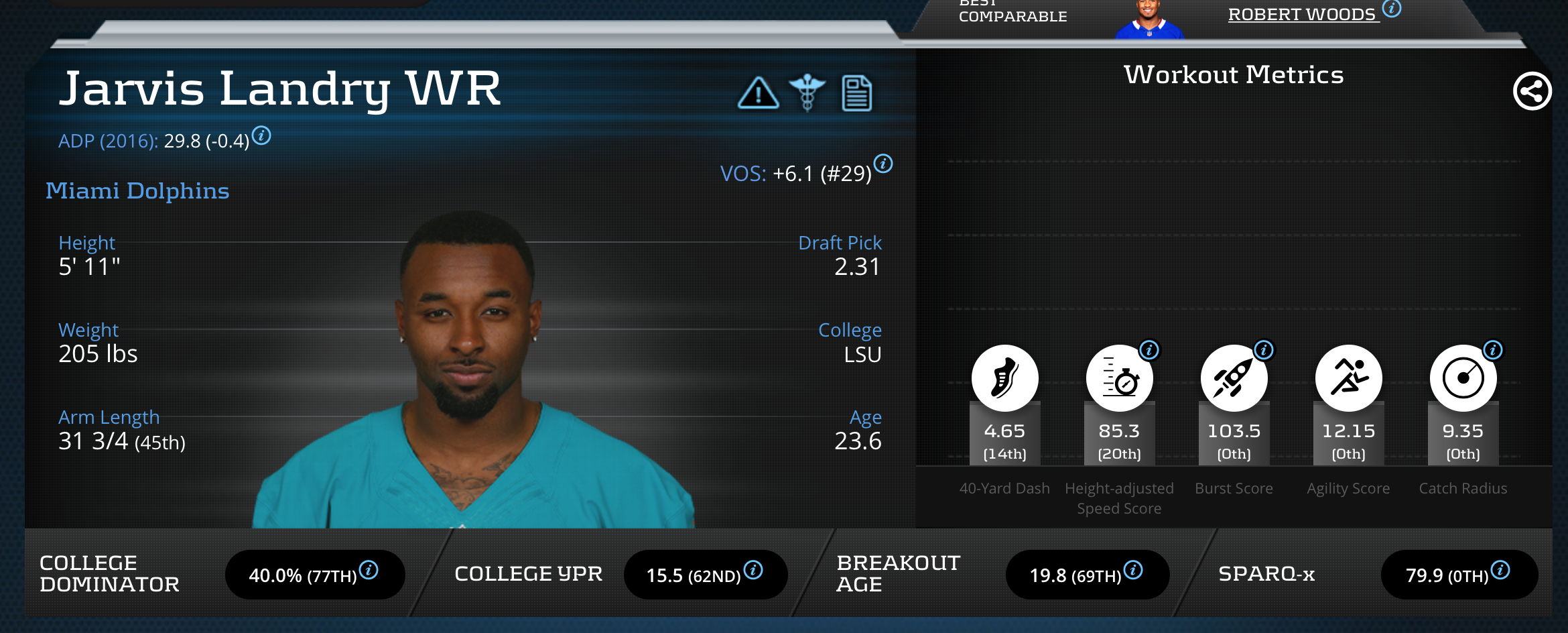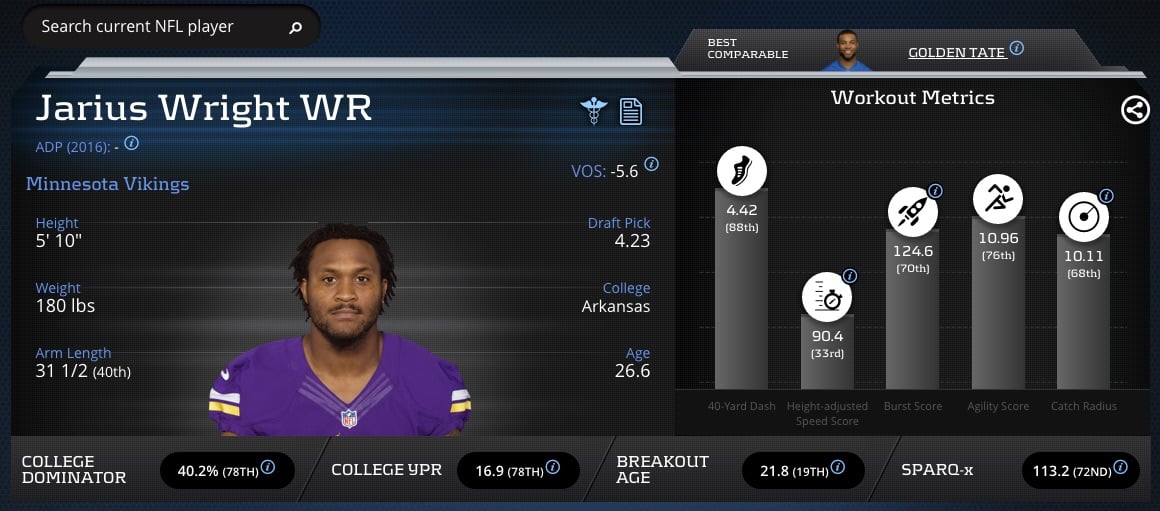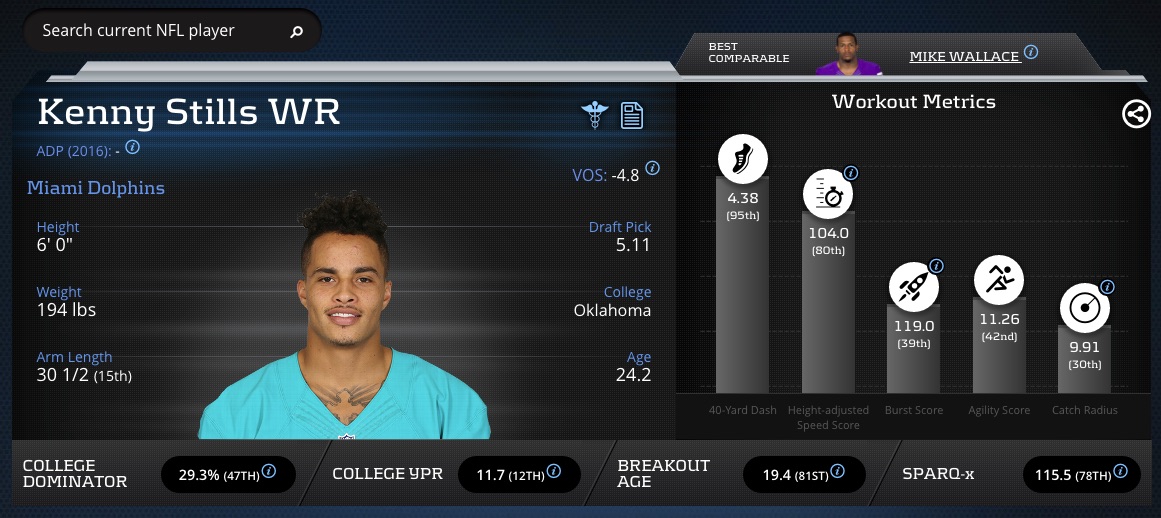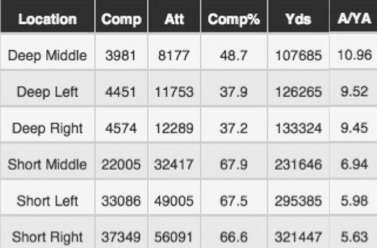No one compares Wes Welker to Calvin Johnson, because they played vastly different roles on their respective offenses.
Wes Welker redefined the NFL slot-flanker hybrid prototype during his time with the New England Patriots. From 2007 to 2012 Welker strung together five seasons with more than 110-receptions. This deserves to be restated for effect: Wes Welker strung together five seasons with more than 110-receptions during a six-year tenure as the New England Patriots’ Y/Z-target hog dominating the interior zones (short and middle) of the football field.
Meanwhile, during that period, Calvin Johnson was averaging 16-yards per reception. This also deserves to be restated for effect: From 2007-2012, Calvin Johnson achieved a 16.0 career yards per reception as the league’s premier X-receiver dominating the exterior zones (deep and perimeter) of the the football field.
While both players were fantasy football studs, Wes Welker could no more aptly execute a post corner than Calvin Johnson could run a crisp 5-yard option route.
Russell Clay from Daily Fantasy Cafe agrees:
It’s an outdated comparison now (sadly) – Wes Welker was amazing at his job. Don’t compare him to Calvin Johnson – there’s no need.
— Russell Clay (@RussellJClay) June 30, 2016
Russell Clay is correct. But there is one problem: this is a fantasy football conversation, and X/Y/Z slots do not exist on public fantasy league platforms. WR fantasy points are WR fantasy points, and Calvin Johnson and Wes Welker were polar opposite players with equivalent fantasy production during their respective prime years.
Wes Welker’s delivered elite fantasy production from 2007 to 2012, because he was one of the most efficient slot/flankers in the league. Welker was everything that Jarvis Landry enthusiasts wish Landry would be, but alas, Landry has been a model of inefficient wide receiver play during his first two years in the NFL. Using PlayerProfiler’s Data Analysis Tool to query the last two years of NFL wide receiver efficiency data, Landry’s 6.9 yards per target was second worst among qualified WRs. Only Davante Adams was worse.

Jarvis Landry Advanced Metrics Profile
Fantasy football analysts who enjoyed Jarvis Landry‘s 2015 production are quick to rationalize Landry’s abhorrent yards per target by citing his role as Miami’s volume slot/flanker. His average depth of target was well below average in 2014 and 2015, because Dolphins coaches asked him to operate close to the line of scrimmage. It would be just as unfair to penalize Landry for playing the slot in Miami as it would be to penalize Wes Welker for his role on the Patriots offense.
There are two problems with this argument.
1. Wes Welker was an efficient slot/flanker, while Jarvis Landry has been an inefficient slot/flanker throughout his 2-year career.
2. The slot wide receiver is generally less valuable to his team.
Fantasy production (the lone positive statistic Jarvis Landry enthusiasts cite) both camouflages inefficiency and overstates the player’s intrinsic quality.
If I were starting a team today, I would select Jarius Wright over Jarvis Landry. While Wright’s athleticism clearly dwarf’s Landry’s evidenced by a SPARQ-x Score gulf: 113.2 vs. 79.9, Wright’s on-field instincts are also superior. Wright’s yards after the catch per target exceeded Landry’s by more than 1.0 per target over the past two seasons despite a similar average depth of target and catch rate.

Jarius Wright Advanced Metrics Profile
The Jarius Wright–Jarvis Landry juxtaposition is illuminating, because as Russell Clay noted, wide receivers are most accurately assessed in the context of their roles. However, Jarvis Landry has two full inefficient NFL seasons on his resume playing a slot/flanker role, which itself diminishes Landry’s value rather than enhances it. Shallow routes constrict the field and are rarely the quarterback’s initial read. Conversely the stretch-X role, played by Landry’s teammate Kenny Stills, provides big plays while stretching field and creating more space for underneath receivers.

Kenny Stills Advanced Metrics Profile
When Kenny Stills is on the field, everybody on the Dolphins’ offense wins. However, wide receivers with the requisite skill set to to be successfully deployed in a stretch-X role are scarce, which drives up their cost. In recent years, ideal stretch-X prototypes Will Fuller and Phillip Dorsett commanded first-round draft capital, because few WRs can do that job. Kenny Stills can. Jarvis Landry cannot.
Miami is a great wide receiver talent configuration laboratory housing all WR archetypes, including the polar extremes: the overvalued Jarvis Landry commodity and the equally undervalued Kenny Stills gem. Every NFL team starts the season with multiple players on the roster who can successful execute Jarvis Landry’s route tree. Meanwhile, close to 50-percent of NFL rosters are devoid of a true field stretching outside playmaker. Kenny Stills’ 56-percent 2015 snap share represented a stunning talent misallocation by Miami’s makeshift coaching carousel.
https://www.youtube.com/watch?v=DG4MUCHvaS0
Perhaps the Dolphins blundering coaching staff was criminally underutilizing Kenny Stills last season, because their various offensive coordinators were spellbound with desire to make former second-round pick Jarvis Landry relevant, propping him up with undeserved target volume. Landry “rewarded’ his misguided offensive coaches with league-bottom isolated efficiency evidenced by a -13.3 (No. 86) Production Premium. No wide receiver’s target share was more incongruent with his talent profile than Jarvis Landry in 2015.
If the Dolphins want to score more points, the team must siphon a significant percentage of Jarvis Landry‘s 2015 targets to Kenny Stills and A.J. Green-clone DeVante Parker in 2016. Increasing Stills’ usage is particularly rational, because throws to deeper sections of the field provide a higher return on investment. Stills proved efficient on deep targets with the Saints in 2014 evidenced by a 11.2 (No. 3) yards per target. By aggressively deploying Stills, who threatens the deeper, more valuable areas of the field, while simultaneously throttling back the unexplosive Landry, Miami’s passing game efficiency will rise.

Quarterback Air Yards Per Attempt By Zone via Pro Football Focus
Is Adam Gase rational tactician? Does Gase possess the necessary fortitude to eschew popularity for efficiency? Gase’s true leadership qualities will be revealed in the Miami Dolphins offensive crucible this season.








